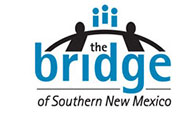Connecting Workforce Opportunity to Maximize Outcomes and Impacts
Las Cruces Sun-News, Learn & Earn Column – June 3, 2018
Academic outcomes have economic impacts.
That’s the underlying message of every plan that seeks to build a strong economic future for New Mexico:
- New Mexico First Statewide Town Hall on Higher Education & the Workforce recommendations that were released in mid-May.
- The “hard to fill jobs” in our state that require career certifications and two-year degrees.
- Data from the Georgetown Center on Education and the Workforce that shows 52% of New Mexico’s “Good Jobs” (those that pay more than $55,000) require less than a bachelor’s degree.
- The Higher Education Department’s “Route to 66” effort to have 66% of New Mexico’s population holding some form of college-level career credential or degree by 2030.
In Dona Ana County, we are ready for that future.
The Dona Ana County/Borderplex Joint Regional Workforce Talent Development Plan is complete and now available for our community to review and understand what each person, business, institution’s role is and what resources are available for changing the future for our families and our communities.
The plan represents almost two years of work by the Workforce Talent Collaborative working in partnership with The Bridge of Southern New Mexico. This amazing group of community leaders deserves a great deal of thanks for staying at and already mobilizing to implement it.
The plan is available at thebridgeofsnm.org. Click on the “How We Do it” tab and choose “Workforce Development.” Both an executive summary and the full plan are located on that page, with clickable links to a host of reports, studies, and recommendations that validate the plan and can help guide the work of others.
Many of the efforts completed in the past guided our work today. We thank them for the efforts that have helped shine the way to the path forward.
So now it’s time to act, and these efforts already in play:
Policy: The Bridge is working with public and higher education leaders from across the state to fix the inequitable funding for dual credit courses that propel high school students across post-secondary finish lines faster, and at less cost to them, their families, and even the state.
Business Engagement: The Bridge, Greater Las Cruces Chamber and Mesilla Valley Economic Development Alliance are working to identify where we can begin to invite business into education to support teachers and students in career awareness and preparation, while closing the soft skills gaps.
STEAM-H Proficiency: This county is home to an abundance of STEAM-H assets in the public schools, DACC, and NMSU Colleges of Engineering and Education. Over the next year, we will map those assets, so families and students have a better understanding of what’s available to them and how to grow their STEM-skills – reaping a harvest of long-term economic rewards.
High School Graduation: Crossing this academic finish line is imperative, but it cannot be the last. Relationships between the school districts and higher education partners are propelling students toward two finish lines simultaneously using career and technical education pathways, dual credit courses and early college high schools.
Career Certifications and Associate Degrees: DACC has undertaken a huge effort to understand how to better support its students and is launching a connected set of supports to ensure retention, workforce readiness, completion and job placement. Working with them and through New Mexico Workforce Connections, it’s possible that we can hit the goal of 66% of our population holding some form of college-level credential.
College Graduate: NMSU is already coalescing its focus around the goals of shortening time to degree to ensure more students graduate (and spend less money doing so), get a job, and can give back to the university when they launch into their careers.
Workforce Solutions/WIOA: Working alongside the Southwestern Workforce Board and its partner agencies, we are developing pilots to Grow Young Families (those with children under 5) and a Career Academy for Opportunity Youth (16- to 24-year-olds who are not in school nor working).
Finally, we are being very intentional in closing the awareness gaps that have plagued this community for far too long – simple lack of awareness, and therefore, limited use of the existing resources available to students, families, and businesses.
The needs of our community are urgent. The potential of our people is real. The assets and systems we already have are now aligned.
So what’s your role? How can you play a part in this amazing effort that’s showing the rest of the region and state how to get it done?
We invite you to support us in this work. If you’re ready to be a part of the solution, call The Bridge at 575-541-7325.

